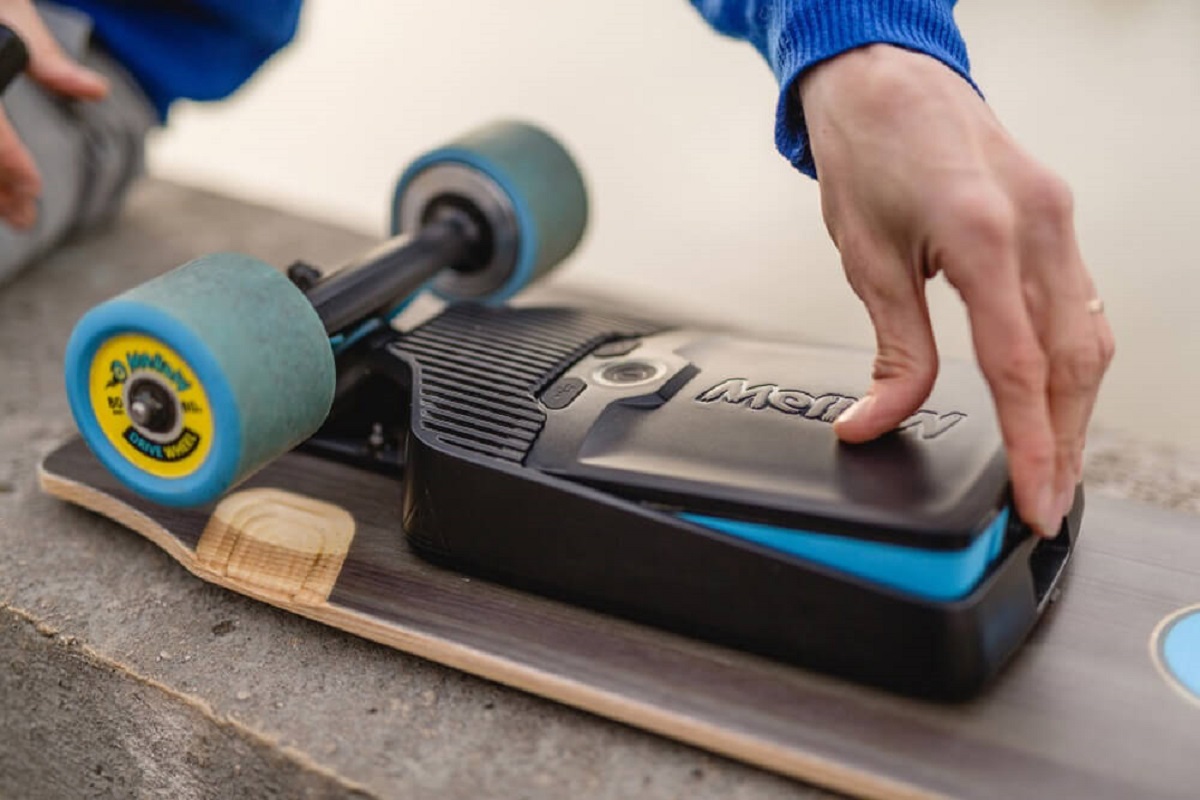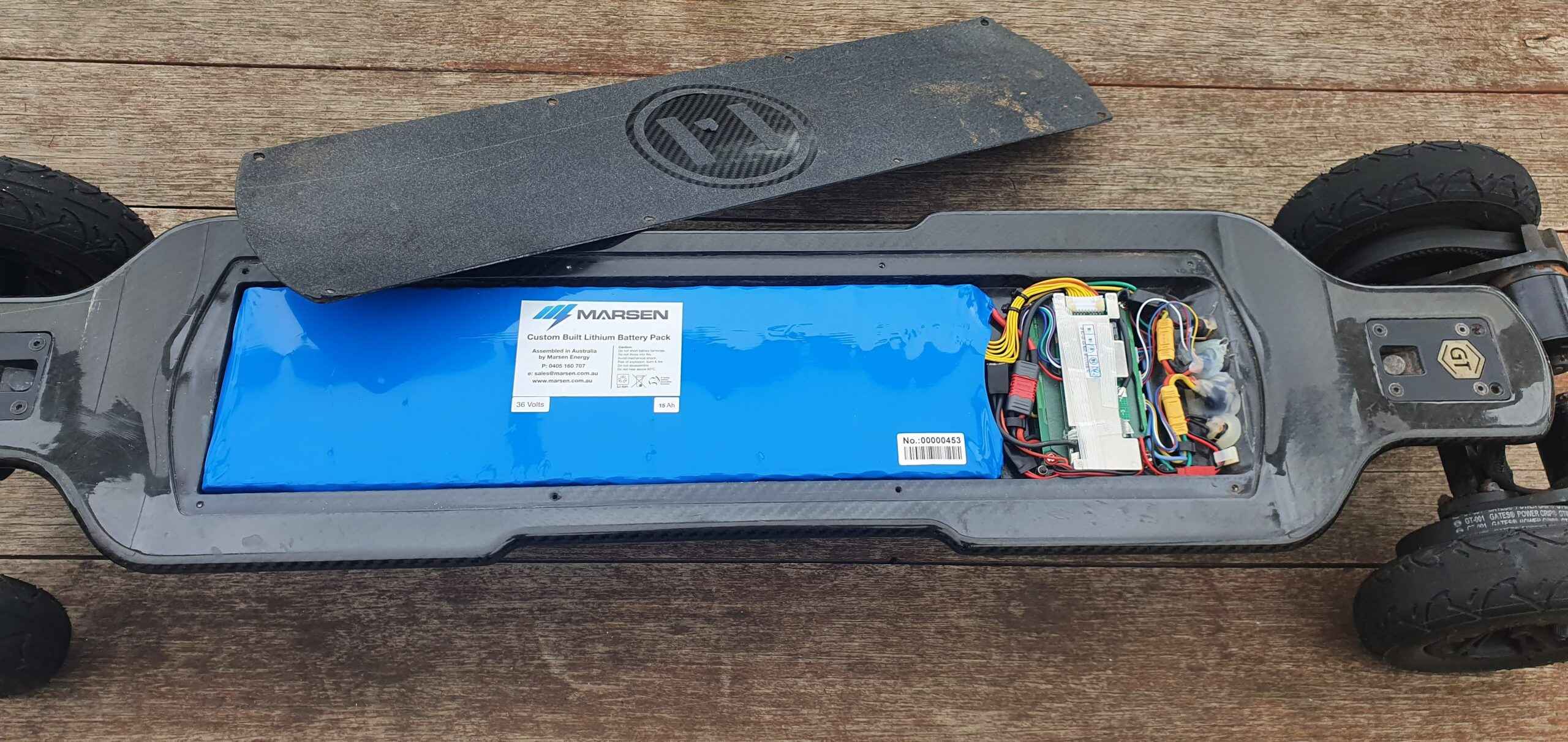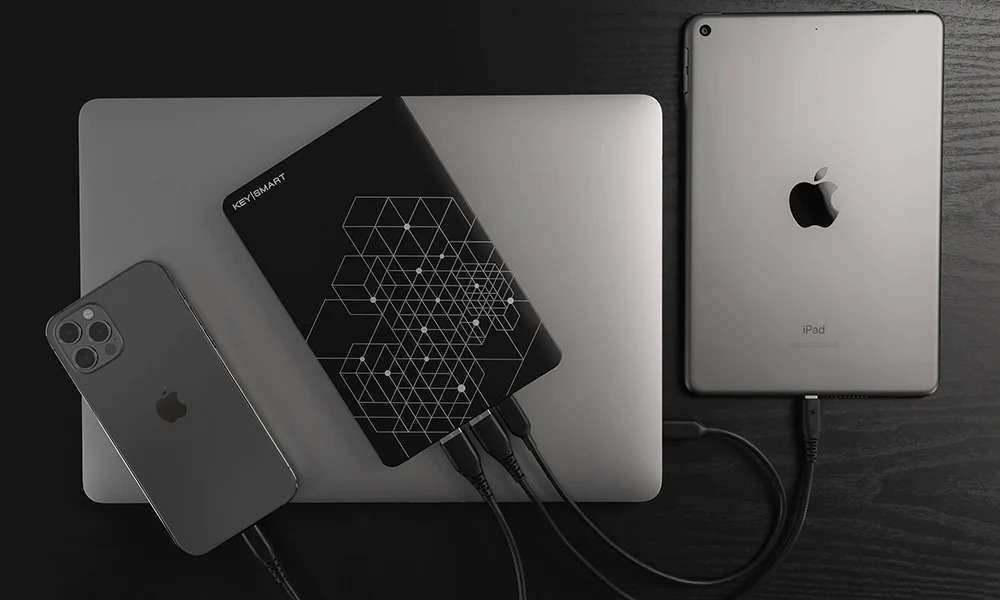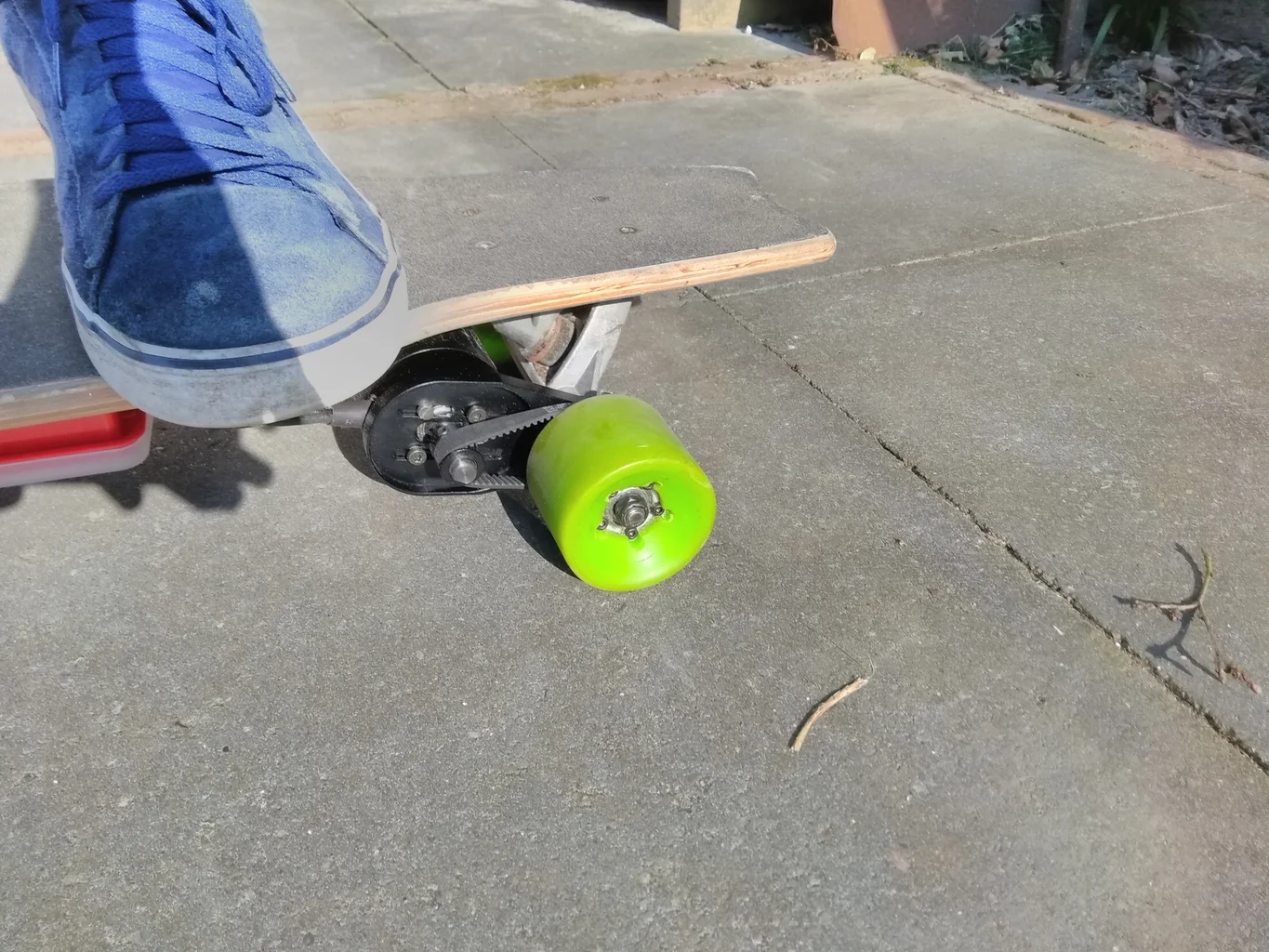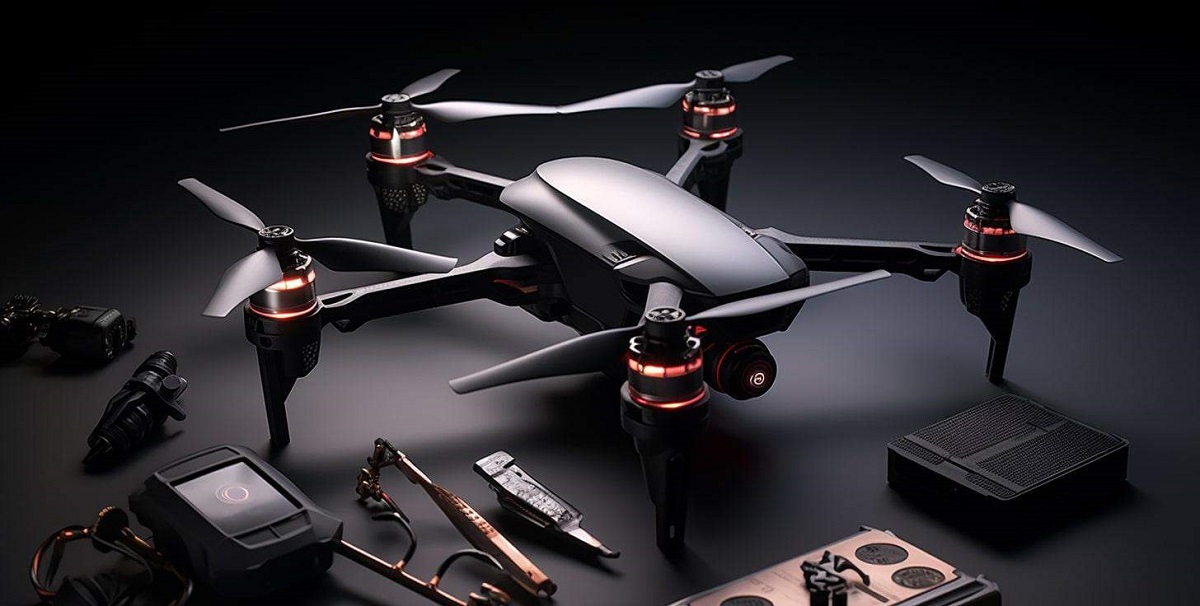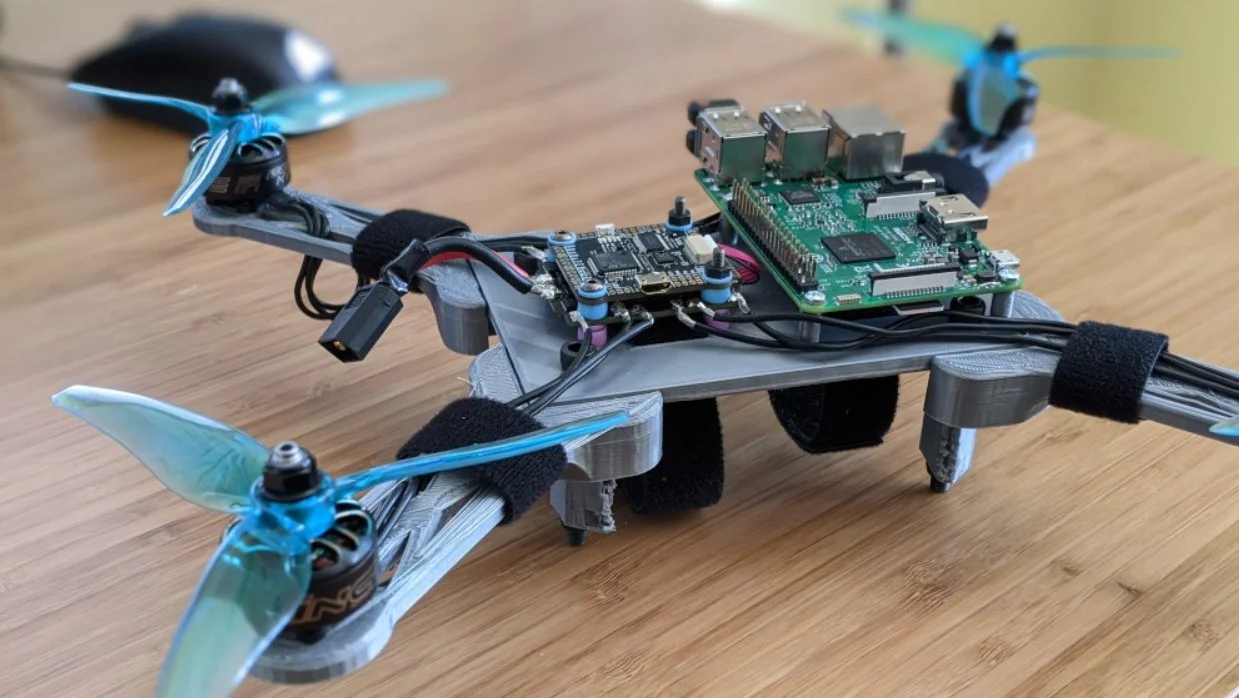Introduction
Electric skateboards are an exciting and convenient mode of transportation, providing a thrilling ride whether you’re commuting to work or simply enjoying a leisurely cruise. One of the key components that powers these electric skateboards is the LiPo (Lithium Polymer) battery. These lightweight and high-energy density batteries are known for their impressive performance, allowing riders to travel long distances on a single charge.
However, charging LiPo batteries requires some specific knowledge and precautions to ensure safe and efficient operation. In this article, we will guide you through the process of properly charging LiPo batteries on an electric skateboard. Whether you’re a seasoned rider or new to the world of electric skateboards, understanding the best practices for charging your LiPo batteries will help you extend their lifespan and maintain optimal performance.
Before we dive into the details of charging LiPo batteries, it’s important to note that proper battery maintenance and safety should always be a top priority. Mishandling or neglecting to follow recommended charging procedures can lead to damage, decrease the battery’s lifespan, or even pose a safety risk. With that in mind, let’s explore the essential information you need to know about LiPo batteries and how to charge them safely and effectively.
LiPo Batteries: What You Need to Know
LiPo batteries are a type of rechargeable battery commonly used in electric skateboards due to their high energy density and lightweight design. These batteries consist of multiple cells, each with a nominal voltage of 3.7 volts. By connecting these cells in series, you can achieve higher voltages to power your electric skateboard.
It’s important to understand the capacity of your LiPo battery, which is typically measured in milliampere-hours (mAh). The capacity determines how much energy your battery can store and directly affects the range and duration of your skateboard’s operation on a single charge. Therefore, it’s essential to choose a LiPo battery with a capacity that aligns with your riding needs.
LiPo batteries come in various configurations, such as 2S (2 cells in series), 3S, 4S, etc. The voltage rating of the battery indicates how many cells are connected in series. It’s important to ensure that the battery’s voltage matches the voltage requirements of your skateboard’s electronics. Using a battery with the wrong voltage can damage your electronics or lead to subpar performance.
Additionally, LiPo batteries require proper care and attention to ensure their longevity and safe operation. Avoid draining your battery completely as it can cause irreversible damage. Instead, consider recharging your battery when it reaches around 20-30% capacity. Regularly monitoring the battery voltage and capacity during charging and discharging cycles is crucial to prevent overcharging, overdischarging, or exceeding the maximum permissible voltage or current.
Overall, understanding the basics of LiPo batteries is crucial for maintaining their performance and ensuring safe charging practices. In the next sections, we will delve into the safety precautions and proper charging procedures you need to follow to protect your LiPo batteries and enjoy a seamless riding experience.
Understanding Battery Voltage and Capacity
When it comes to LiPo batteries, two crucial factors to consider are voltage and capacity, as they directly impact the performance and range of your electric skateboard. Understanding these concepts will help you make informed decisions when choosing a battery and ensure optimal charging practices.
Voltage
The voltage of a LiPo battery is determined by the number of cells connected in series. Each cell has a nominal voltage of 3.7 volts, so a 2S (2 cells in series) battery will have a nominal voltage of 7.4 volts, a 3S battery will have 11.1 volts, and so on. It’s important to match the voltage rating of your battery with the voltage requirements of your electric skateboard’s electronics. Using a battery with the wrong voltage may result in improper performance or potential damage to the electronics.
Capacity
The capacity of a LiPo battery is typically measured in milliampere-hours (mAh) and indicates how much energy the battery can store. A higher capacity battery will provide a longer ride time and range, while a lower capacity battery will have a shorter duration. Consider your riding needs and style when choosing a battery with the appropriate capacity. Keep in mind that higher capacity batteries may take longer to charge.
It’s important to note that the voltage and capacity of your battery are independent of each other. You can have a 3S battery with various capacities, such as 5000mAh or 10000mAh. The voltage determines the power output, while the capacity determines how long the battery can sustain that power. It’s essential to strike a balance between voltage and capacity to meet your riding requirements.
When selecting a LiPo battery for your electric skateboard, consider both the voltage and capacity requirements of your skateboard’s electronics, as well as your desired riding range. Ensure that the battery you choose is compatible with your electric skateboard’s power system and has enough capacity to support the duration of your rides.
In the next section, we will discuss the safety precautions you need to follow when charging LiPo batteries, as mishandling them can be dangerous and result in damage to both the battery and your electric skateboard.
Safety Precautions for Charging LiPo Batteries
Charging LiPo batteries requires careful attention to safety protocols to prevent accidents, fires, and damage to your battery and electric skateboard. Here are some essential safety precautions to follow when charging your LiPo batteries:
1. Use a LiPo-specific charger: Use a charger designed specifically for LiPo batteries. These chargers have features like balanced charging, which ensures that all cells in the battery are charged equally. Using the wrong charger can result in overcharging or undercharging, which can damage the battery or reduce its performance.
2. Charge in a fire-safe area: LiPo batteries have the potential to catch fire if mishandled or improperly charged. Always charge your batteries in a well-ventilated area and have a designated fireproof charging bag or container ready in case of emergencies. Avoid charging near flammable materials or surfaces.
3. Never leave batteries unattended: While charging LiPo batteries, never leave them unattended. It’s crucial to monitor the charging process to ensure that everything is going smoothly and to be able to react immediately if any issues arise.
4. Follow the manufacturer’s instructions: Read and follow the charging instructions provided by the battery manufacturer. They will provide specific guidelines for voltage, current, and charging times to ensure the safe and proper charging of your LiPo batteries. Ignoring these instructions can lead to damage and reduced battery lifespan.
5. Avoid overcharging and overdischarging: Overcharging a LiPo battery can cause it to swell, catch fire, or even explode. Similarly, overdischarging can permanently damage the battery. Follow the recommended charging levels and voltage cutoffs to prevent these issues.
6. Balance charge whenever possible: Balance charging helps equalize the voltage of each cell in the battery pack, preventing imbalances that can lead to reduced performance or even cell failure. If your charger has a balance charging feature, make sure to use it for optimal battery health.
7. Store batteries correctly: When not in use, store your LiPo batteries in a cool, dry place. Avoid storing them near flammable materials or in extreme temperatures. Using specialized LiPo storage bags or boxes can provide an extra layer of protection.
Remember, safety is paramount when handling and charging LiPo batteries. By following these precautions, you can enjoy the performance and longevity of your batteries without compromising your own safety or the safety of your electric skateboard.
Choosing the Right Charger for Your Electric Skateboard
Choosing the right charger for your electric skateboard is crucial to ensure safe and efficient charging of your LiPo batteries. Here are some factors to consider when selecting a charger:
1. Compatibility: Ensure that the charger you choose is compatible with your LiPo battery’s voltage and cell count. The charger should support the voltage and cell count of your battery for proper and efficient charging.
2. Charging speed: Consider the charging speed of the charger. Higher charging currents can shorten the charging time, but it’s important to stay within the recommended charging current specified by the battery manufacturer. Charging at too high of a current can damage the battery or reduce its lifespan.
3. Balance charging: Look for a charger that has a balance charging feature. Balance charging ensures that each cell in the battery pack is charged equally, preventing imbalances and maximizing battery performance and lifespan.
4. Safety features: Check if the charger has built-in safety features, such as overcharge protection, short circuit protection, and reverse polarity protection. These features help safeguard your battery and skateboard electronics during the charging process.
5. Portability and convenience: Consider the size, weight, and portability of the charger. If you plan on carrying the charger with you, it’s important to choose one that is compact and easy to transport.
6. User-friendly interface: Look for a charger with a user-friendly interface that provides clear information on the charging process and allows you to easily adjust settings, such as voltage and charging current.
7. Reputation and reviews: Research the reputation and read reviews of the charger before making a purchase. Check for reliability, durability, and positive user experiences to ensure that you are investing in a quality charger.
Remember to always follow the manufacturer’s recommendations and guidelines when selecting a charger. Choosing the right charger will not only ensure safe and proper charging, but it will also help extend the lifespan of your LiPo batteries, keeping them in optimal condition for a longer period.
How to Connect and Set Up Your Charger
Setting up your charger properly is essential for safe and efficient charging of your LiPo batteries. Follow these steps to connect and set up your charger:
1. Gather the necessary equipment: Ensure that you have the charger, the LiPo battery, and the appropriate cables and connectors. Check that all components are in good condition and free of any damage.
2. Power off your electric skateboard: Before connecting the charger, ensure that your electric skateboard is powered off. This will prevent any accidental engagement of the motor or interference with the charging process.
3. Connect the charger to a power source: Plug the charger’s power cord into a standard electrical outlet. Make sure that the voltage matches the voltage specifications of your charger. Avoid using power sources with unstable or fluctuating voltages, as they can lead to improper charging or damage to the battery.
4. Connect the battery to the charger: Connect the LiPo battery to the charger using the appropriate cables and connectors. Ensure that the polarity is correct – the positive and negative terminals should match. Double-check your connections to avoid any potential short circuits or damaged components.
5. Set the charging parameters: Refer to the user manual or instructions provided with your charger to set the appropriate charging parameters, such as voltage, current, and battery type. Make sure to follow the manufacturer’s recommendations to avoid overcharging, overdischarging, or other potential risks.
6. Begin the charging process: Once you have set the desired charging parameters, start the charging process. Monitor the charger and the battery throughout the charging cycle to ensure everything is functioning correctly and to promptly address any issues that may arise.
7. Wait for the charging cycle to complete: Allow the charger to complete the charging cycle as per the manufacturer’s recommendations. Avoid interrupting the charging process unless necessary.
8. Disconnect the charger and battery: Once the charging cycle is complete, disconnect the LiPo battery from the charger. Ensure that you handle the battery and charger with care to prevent any damage or short circuits.
By following these steps, you can confidently connect and set up your charger, ensuring a safe and effective charging process for your LiPo batteries. Remember to always prioritize safety and refer to the manufacturer’s instructions for specific guidance related to your charger and battery model.
Recommended Charging Procedure for LiPo Batteries
Following the recommended charging procedure is crucial to ensure the safe and proper charging of your LiPo batteries. Here’s a step-by-step guide to help you charge your LiPo batteries effectively:
1. Prepare the charging area: Choose a well-ventilated area away from flammable materials to set up your charging station. Place your LiPo battery on a non-flammable surface or in a LiPo charging bag or container.
2. Inspect the battery: Before charging, inspect the LiPo battery for any visible damage, such as punctures, swelling, or leakage. Do not charge a damaged battery, as it can be dangerous and may cause further damage or failure.
3. Connect the battery to the charger: Connect the LiPo battery to the charger using the appropriate cables and connectors. Double-check the polarity to ensure correct alignment of the positive and negative terminals.
4. Set the charging parameters: Set the charging parameters according to the specifications provided by the battery manufacturer. This includes setting the correct voltage, current, and charging mode. Avoid charging beyond the recommended voltage or current limits to prevent damage to the battery or charger.
5. Activate balance charging: If your charger has a balance charging feature, activate it. Balance charging ensures that each cell in the LiPo battery is charged evenly, preventing imbalances that can lead to reduced performance or cell failure.
6. Start the charging process: Begin the charging process by pressing the start button on your charger. Monitor the charger and battery throughout the charging cycle, ensuring that everything is functioning properly. If any abnormalities, such as excessive heat, smoke, or unusual noises, occur, immediately stop the charging process and investigate the issue.
7. Allow for proper cooling: LiPo batteries can heat up during the charging process. To prevent overheating, provide adequate ventilation to the charging area and avoid stacking batteries or charging multiple batteries simultaneously in a confined space.
8. Monitor the charging progress: Regularly check the charger’s display for information on the battery’s voltage, capacity, and charging time. Be cautious with your battery’s temperature and discontinue charging if it becomes excessively hot or shows signs of malfunction.
9. Complete the charging cycle: Allow the charging cycle to complete fully as recommended by the battery manufacturer. Avoid interrupting the process prematurely to prevent incomplete charging or imbalances between the battery cells.
10. Disconnect the charger and battery: Once the charging cycle is complete, carefully disconnect the LiPo battery from the charger. Ensure that you handle the battery and charger with care, taking precautions to avoid short circuits or accidental damage.
By following these recommended charging procedures, you can ensure the safe and efficient charging of your LiPo batteries, promoting their longevity and optimal performance on your electric skateboard.
Monitoring the Charging Process
Monitoring the charging process is essential to ensure the safety and efficiency of your LiPo battery charging. Here are some key aspects to consider and monitor during the charging process:
1. Visual inspection: Regularly visually inspect the LiPo battery, charger, and charging cables for any signs of damage, such as frayed wires, loose connections, or bulging cells. If you notice any abnormalities, immediately stop the charging process and address the issue before proceeding.
2. Charger indicators: Pay attention to the charger’s display or indicators, which provide important information about the charging progress. Monitor the voltage, current, capacity, and charging time displayed on the charger to ensure that they are within the recommended ranges specified by the battery manufacturer.
3. Temperature: Keep an eye on the temperature of the LiPo battery during charging. LiPo batteries can generate heat, especially during fast charging or if they are nearing full capacity. If the battery feels excessively hot to the touch or if the charger’s temperature indicators show an abnormal rise in temperature, discontinue charging and allow the battery to cool down before resuming charging.
4. Charging time: Monitor the charging time to ensure that the LiPo battery is charging for the appropriate duration as recommended by the manufacturer. Charging for an insufficient amount of time may result in undercharged cells, while overcharging can lead to damage or reduced battery performance.
5. Abnormalities: Watch out for any unusual signs or behaviors during the charging process, such as smoke, sparks, excessive heat, or strange sounds. These are warning signs of a potential problem and indicate that you should immediately stop the charging process and investigate the issue further.
6. Balancing: If your charger supports balance charging, keep an eye on the individual cell voltages during the charging process. If you notice significant imbalances between the cell voltages, it may indicate a problem with the battery, charger, or charging process. Ensure that the charger is actively balancing the cells and that they are reaching a similar voltage level.
7. Time management: Avoid leaving the LiPo battery charging unattended for an extended period. It’s crucial to be present and attentive during the charging process to respond promptly to any issues that may arise. Never leave the charger connected overnight or for an extended duration beyond what is recommended by the battery manufacturer.
Remember, monitoring the charging process is a critical step to prevent safety risks and ensure the longevity of your LiPo batteries. By staying aware of the visual, temperature, and performance indicators, you can detect any potential problems early on and take appropriate action to address them.
How to Store LiPo Batteries Safely
Proper storage of LiPo (Lithium Polymer) batteries is essential for their longevity and safety. Improper storage can lead to damage, reduced performance, or even a safety hazard. Here are some guidelines to follow when storing your LiPo batteries:
1. Charge to storage voltage: Before storing your LiPo batteries for an extended period, ensure that they are charged to the recommended storage voltage. The storage voltage for LiPo batteries is typically around 3.8 to 3.85 volts per cell. Charging your batteries to this level helps maintain their overall health during storage and prevents overdischarging.
2. Disconnect the batteries: Prior to storing LiPo batteries, disconnect them from any electronic devices or power sources. This disconnects the electrical circuit and prevents any potential drain on the batteries, which can lead to overdischarge and subsequent damage to the cells.
3. Store in a cool, dry place: Choose a cool and dry location to store your LiPo batteries. Avoid areas with extreme temperatures or high humidity, as they can negatively impact the battery’s performance and lifespan. Ideally, the storage temperature should be around 20-25 degrees Celsius (68-77 degrees Fahrenheit).
4. Use a fireproof container: To further enhance safety, store your LiPo batteries in a fireproof container specifically designed for LiPo battery storage. This can be a LiPo storage bag or a metal container with a fireproof lining. These containers can help contain and isolate any potential fire hazards.
5. Avoid physical damage: Handle your LiPo batteries with care to avoid any physical damage. Do not pierce or puncture the battery, as this can lead to leakage, short circuits, or other safety hazards. Inspect the battery for any signs of damage before storage, and if found, follow proper disposal procedures.
6. Check the batteries regularly: Even when in storage, it’s essential to periodically check the LiPo batteries. Inspect them for any physical damage, swelling, or leakage. If you notice any abnormalities, discontinue using and properly dispose of the battery following the recommended guidelines.
7. Recharge before use: Before using LiPo batteries that have been in storage for an extended period, it’s important to recharge them to their optimal operational voltage. Ensure the batteries are balanced and check the voltage levels before using them for your electric skateboard or other applications.
By following these guidelines, you can store your LiPo batteries safely, protecting them from potential damage, ensuring their longevity, and minimizing the risk of safety hazards. Proper storage practices are crucial for maintaining the performance and safety of your LiPo batteries over the long term.
Troubleshooting Common Charging Issues
While charging LiPo batteries can generally be a straightforward process, you may occasionally encounter some common issues. Here are some troubleshooting steps to help resolve these problems:
1. Charger not recognizing the battery:
– Ensure that the battery terminals are clean and free from dirt or debris.
– Double-check the polarity and make sure the battery is properly connected to the charger.
– Confirm that the battery voltage and cell count match the charger’s specifications.
2. Charger not starting the charging process:
– Verify that the charger is receiving power from a functioning outlet.
– Check the charger’s settings and ensure that the correct voltage, current, and battery type are selected.
– If the charger has a start or activate button, make sure it has been pressed to initiate the charging process.
3. Slow charging rate:
– Confirm that you are using a charger with a sufficient charging current output for your LiPo batteries.
– Check the charger’s settings and verify that the current output is set to the desired level.
– Ensure that the LiPo batteries are in good condition and haven’t reached their maximum capacity limit, which can result in slower charging speeds.
4. Overheating during charging:
– Stop the charging process immediately if you notice excessive heat or the battery becomes too hot to touch.
– Allow the battery and charger to cool down before resuming the charging process.
– Verify that the charging current is within the recommended range specified by the battery manufacturer.
– Ensure that the charging area is well-ventilated and not exposed to direct sunlight or high temperatures.
5. Balancing issues:
– Check if your charger supports balance charging and ensure that it is activated.
– Ensure that the battery and charger are properly connected, and all connections are secure.
– If the charger indicates a significant imbalance in cell voltages, stop the charging process and investigate further to identify if there are any damaged or faulty cells.
If the troubleshooting steps outlined above do not resolve the issue, it is recommended to seek assistance from the manufacturer or a professional specializing in LiPo batteries. Remember to always prioritize safety during troubleshooting and discontinue any charging process that poses a potential safety risk.
Conclusion
Charging LiPo batteries for your electric skateboard is a crucial process that requires knowledge, attention, and adherence to safety guidelines. By understanding the basics of LiPo batteries, including their voltage, capacity, and proper charging procedures, you can ensure their longevity and optimal performance.
Throughout this article, we have explored various aspects of charging LiPo batteries, including safety precautions, choosing the right charger, connecting and setting up the charger, recommended charging procedures, monitoring the charging process, storing LiPo batteries safely, and troubleshooting common charging issues.
Remember, safety is paramount when dealing with LiPo batteries. Always use a LiPo-specific charger, charge in a fire-safe area, and never leave batteries unattended during the charging process. Follow the manufacturer’s instructions, maintain proper voltage, and capacity levels, and be vigilant in monitoring the charging progress.
Proper storage of LiPo batteries is essential to maintain their performance and safety. Store them in a cool, dry place, disconnected from power sources, and consider using fireproof containers for added protection.
In case you encounter common charging issues, troubleshoot with care, ensuring to check connections, charger settings, and battery conditions. If needed, seek assistance from the manufacturer or a professional.
By following the guidelines outlined in this article, you can safely and effectively charge your LiPo batteries for your electric skateboard, ensuring a smooth and enjoyable riding experience while extending the lifespan of your batteries.







